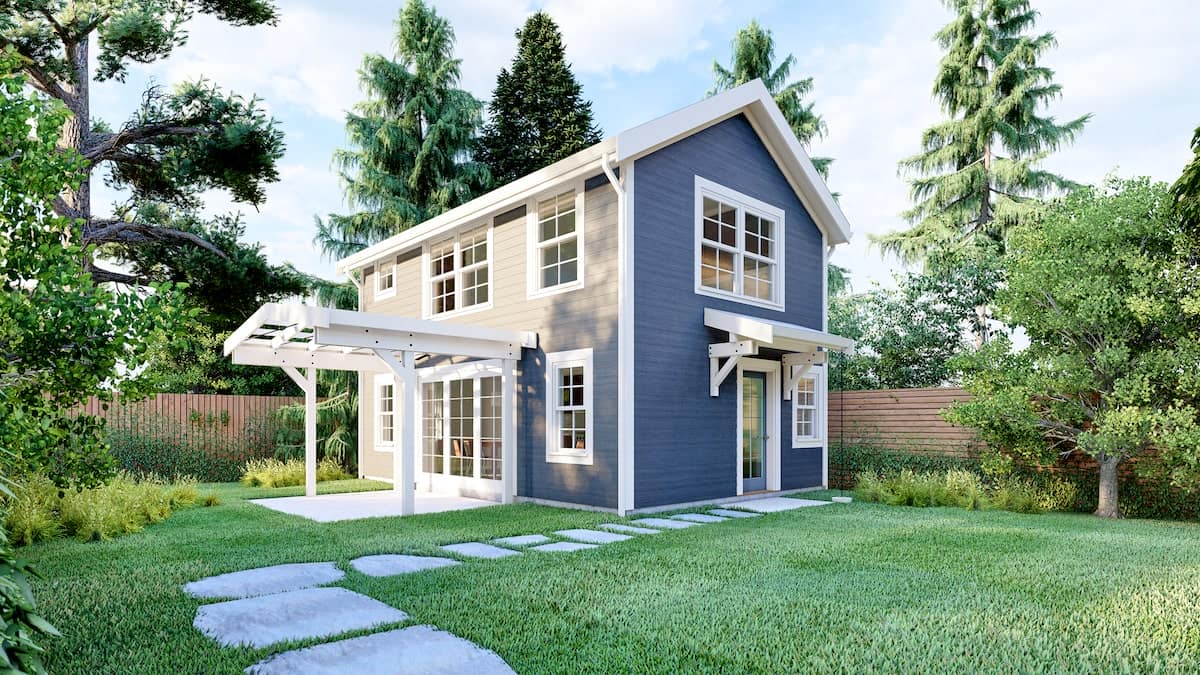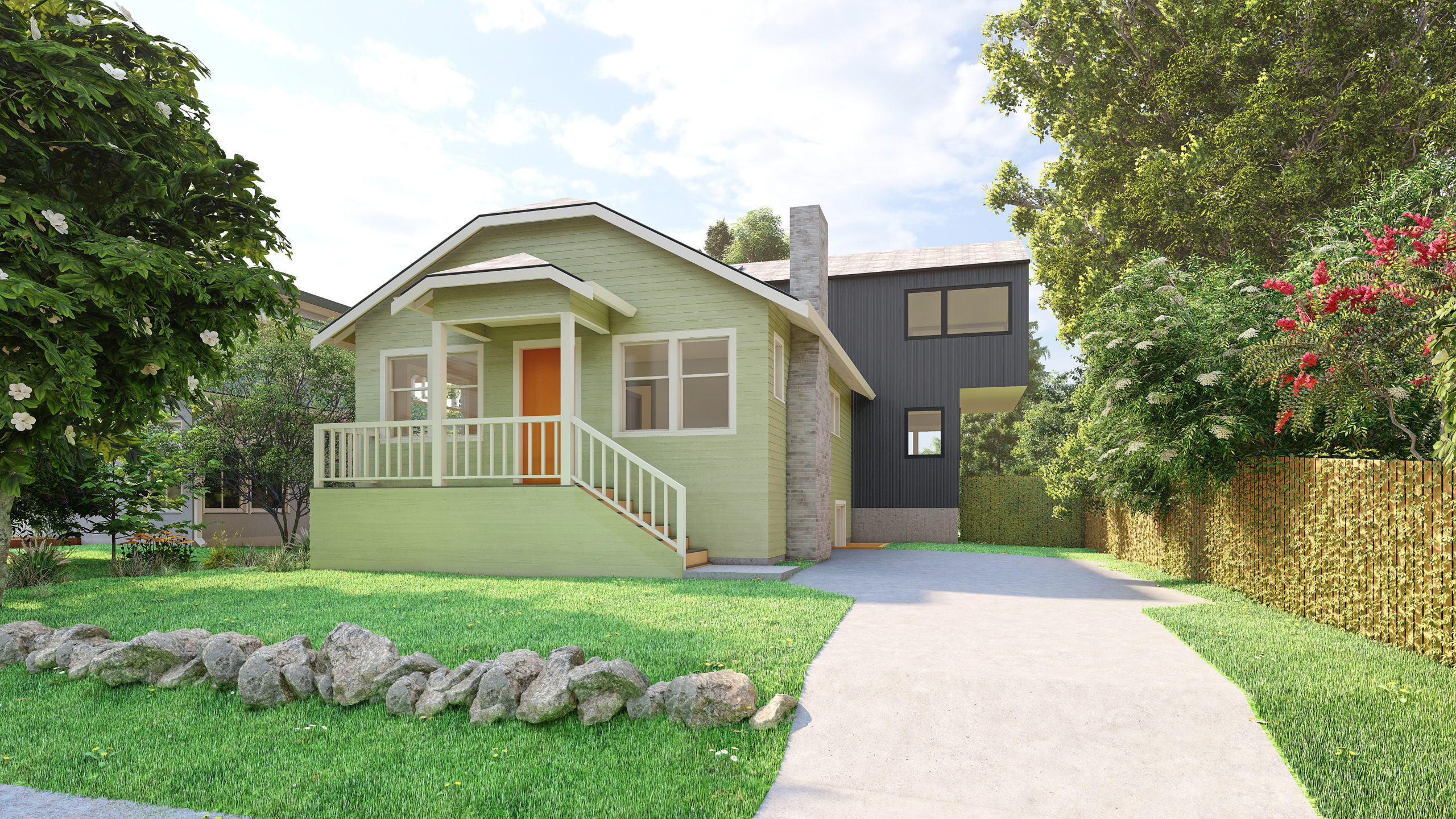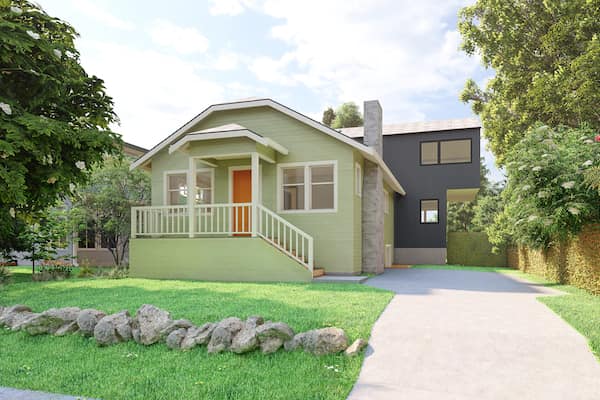Not every project gets built. A lot of designs are never realized. Here are two examples:


With good 3D models, the concepts can at least live on and maybe garner new projects by being part of my portfolio. If I want to be crafty, I could share these as “in progress” rather than unbuilt. In fact the two projects above could one day happen, in some form or another. To say they are on the boards, or in process, is more stretched truth than lie. The client for the addition decided to do a backyard workshop. He still talks about doing the addition because he loved it so much. The DADU made it through permitting but back in 2017 owner-occupancy rules tanked the project. The client still owns the house and will one day build something back there. It won’t be that exact building, but its essence will remain.
But I’m not talking about those projects. Today I want to talk about the projects that never get built because they don’t need to be. Or because they shouldn’t be built. The greenest building is the one that doesn’t get built, right? The most environmentally friendly car is one that’s never driven or, better yet, never created in the first place.
When homeowners reach out to me about a remodel, my first goal is not to get them as a client but to determine what’s the right project. Is it bigger or smaller than they think? Does it even exist?
Sometimes an email solves this. Other times a prospect meeting leads to an a-ha moment. Equally common is I get hired to do a consultation: some investigation into the house, site, and codes. A couple hours and a few hundred dollars later, the homeowners realize the answer is not what they thought. I don’t get hired and I’m thrilled.
One of my favorite examples of the unbuilt project goes like this:
A family I know lives next to their best friends, who happen to be clients of mine. The family, let’s call them the Costellos, watch as their neighbor’s back deck gets transformed. They then have regular hangouts and parties in the renovated space. It’s a small project, but transformative for the house and loved by both the homeowners and their neighbors. A year or two goes by and the Costellos reach out to me. Their house isn’t working the way it should. The kitchen is old. There aren’t enough bedrooms. It feels like they are squatting rather than living in their house. We get together, walk through the house, and talk about their wants and needs. I go back to the office and write an email rather than a proposal. I outline three options for them: a small remodel, a big remodel/addition (adding a third floor), and moving. I discuss the pros and cons of each path. Seeing the three directions side by side, the Costellos realized the right decision was to move. The cost and timeline to make the house what they wanted wasn’t worth it. They were sad to leave their neighbors, their block, and their spectacular views of the Olympics. But the answer was clear: not hiring me was the right decision. A few months later they purchased a new home less than two miles away and are beyond grateful that I helped them not remodel. Bonus result? They still own that original house, so I expect someday we’ll work together either on their new or old house. That’s not why I told them to move, but it’s a nice perk.
More recently an older gentleman, Steven, called me looking to have his carport rebuilt. It’s 2021 and there’s not enough hours in the day. I try my best to say no to small projects like this, but sometimes it’s hard to—and sometimes my schedule magically aligns to absorb a tiny, quick project. I did a bathroom remodel this year. I haven’t done one of those in years. But a friend of a friend called me on the right day and I had time that week to knock it out…Anyways I felt bad saying no to this prospect who had a genuine need. I thought about his project and wrote him an email. I raised a few concerns I had about his project (he had already redone his driveway which was going to be problematic for adding a new carport foundation) and told him I didn’t have time to help. I said I’d pass along his info to some friends, maybe one of them could help him. (Whenever I have projects that aren’t a good fit for me, I always try to pass them along to other architects, especially other sole practitioners and small firms I know.) I then went on to say, you know, instead of building a carport, why not just buy a prefab car canopy. No permits, no waiting, much cheaper, and most importantly no foundations to ruin his nice new driveway. Steven loved the idea. At 84, he doesn’t want to waste time waiting for the Seattle Permit Department to give him permission to protect his car from the rain. With the solution I offered him, he might be able to have the carport ordered, shipped, and installed within a week. Another unbuilt project that I couldn’t be prouder of.
People call architects to solve problems. Sometimes those solutions are buildings. Sometimes there’s an alternative that takes a few billable hours of time to figure out. And fairly often the answer is move, get a prefab thing, or buy some nice furniture and new tile. With that last category of solutions, we can often come to the right decision with a good conversation over the phone, an in person meeting, and/or some follow up emails.
When people reach out to Shoegnome Architects, my goal isn’t to get the biggest fee I possibly can or to design the coolest piece of architecture. The goal is always to find the right answer.
Follow Shoegnome on Facebook, Instagram, and Youtube.
Do you use Archicad? Check out the Shoegnome Open Template for Archicad.

4 thoughts on “Unbuilt”
Jared. You are the type of designer the world needs. This post is incredibly inspiring. Wish you all the best.
🙂 Thank you!
Wow very nice article.
Thanks mom!